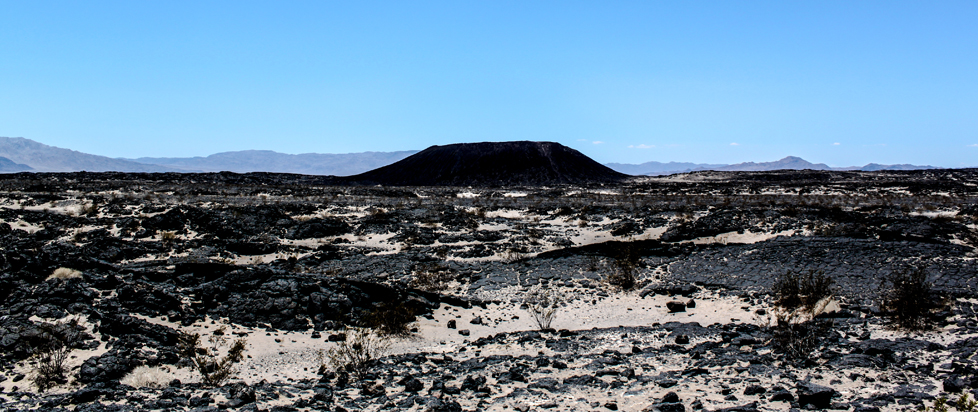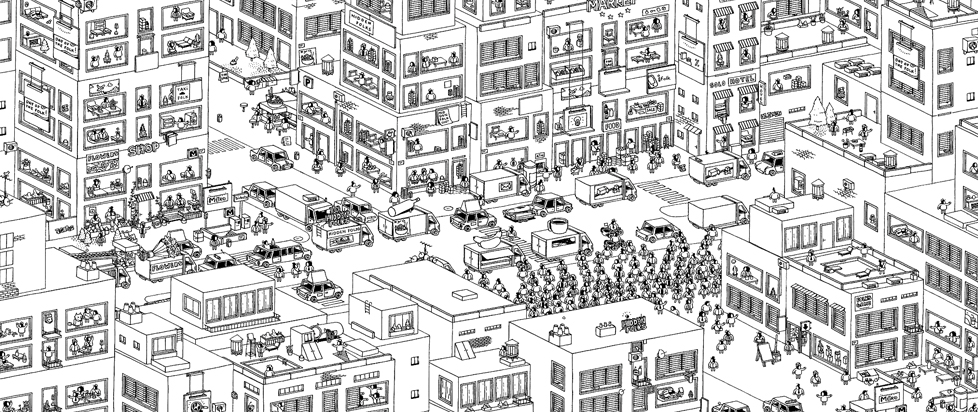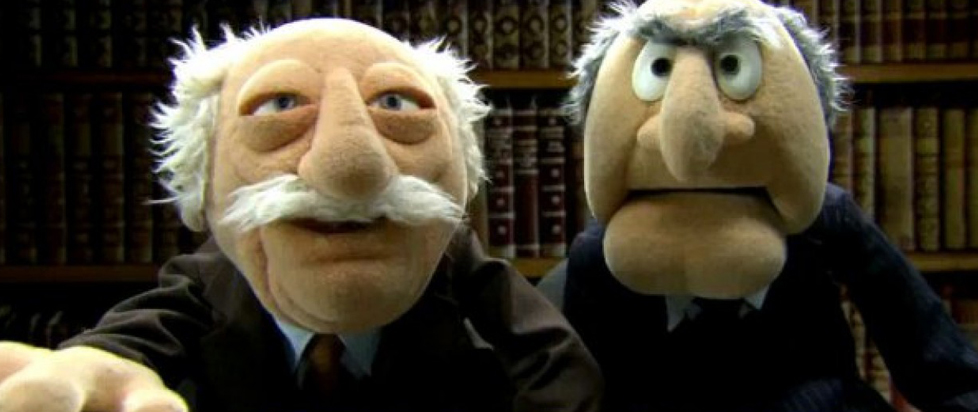
Eschatology
The Burnt Offering is where Stu Horvath thinks too much in public so he can live a quieter life in private.
———
It is the end of the Cretaceous period. A massive asteroid has impacted the earth in the area of what is now Chicxulub, Yucatan. Megatsunamis roil the seas. A cloud of debris from the impact is ejected outside the atmosphere and incandesces on re-entry, scorching the Earth’s surface. Volcanos erupt. Earthquakes rumble. Surely, this is the end.
It is 70 AD. Titus Flavius, at the head of an army of 70,000 Roman soldiers, has breached the walls of Jerusalem. The Temple of Jerusalem is aflame. Over a million of the city’s residents are dead and nearly another 100,000 enslaved. Surely, this is the end.
It is 1353. Death has walked the Silk Road to Europe and the Middle East. Once great cities are now stinking open graves. 200 million people have turned black and died. Surely, this is the end.
It is 1945. There is a brilliant flash of light followed by a loud boom. In moments, a firestorm like nothing the world has ever seen consumes a city. Surely, this is the end.
It is 11 o’clock on December 20, 2012. The Mesoamerican Long Count calendar is about to run out. Depending on your particular flavor of New Age belief, we are about to be beset by: a solar maximum, a polar shift, a black hole, an alien invasion, a collision with an astronomical body called Nibiru. Surely, this is the end.
It is 20XX. Advances in Strong AI have created an intelligence explosion. Machine thinking is now faster that the human mind can comprehend. Surely, this is the end.
There’s more.
The fall of Tenochtitlan.
Y2K.
The Ghost Dance.
Pompeii.
The Great War.
* * *
The idea that the world will end, and that end is likely imminent, has been with us for thousands of years. The Norse myths of Ragnarok and the Jewish scriptures detailing the Deluge are testament to that. In fact, most ancient myth cycles include a story involving a catastrophic flood, so, perhaps our fascination with the destruction of our species may be a deeply held genetic anxiety.
Whether a spiritual or temporal concern, as self-centered as humans are, the apocalypse really is about us. The world will keep on spinning once we’re gone. I think that thought drives us a little crazy.
We are fragile creatures, bound to our surroundings by necessity. In the early days of our history, when a mud slide or a fire wiped out our village, it wiped out all we had ever known. We may escape with our lives in the short term, but the loss of our security and prosperity was potentially just as deadly.
Thanks to exploration and communication technology, the world has grown smaller over the centuries, but no safer. War and disease walk the roads of civilization along with progress. These threats are more immediate than extinction and so, when we talk about apocalypse, we are actually talking about change, often violent and final, visited upon a place, a culture or a way of life.
In this way, the Book of Revelation, perhaps the most famous account of the coming apocalypse, is actually a thinly veiled history, a lamentation of the decadence of the Roman Empire and the depredations it visited upon Jerusalem. That holy city was irrevocably changed by the sack. The historian Josephus claims the city was razed to the foundations so that, “nothing was left that could ever persuade visitors that it had once been a place of habitation.”
Is that not an apocalypse for the residents who likely knew little of the world beyond the city? For the million dead in its streets? For the hundred thousand slaves who would never return?
Yet cultures, groups and cities do not think or experience things. Only their smallest constituent part, the individual, can experience and express the disquiet brought about by widespread upheaval. Thus, the apocalypse is a personal matter. Cartesian, even. If you are no longer alive to experience the world, does the world still exist?
* * *
There are two broad categories of end of the world yarn: those that take place as it happens, usually with a focus on prevention, and those that take place in the aftermath and deal with themes of survival in extreme circumstances. Very few straddle both scenarios, with good reason. Stephen King’s The Stand does and its two halves feel dissonant, the tone inconsistent.
From there, both types are divided into further sub-genres organized by the cause of the apocalypse. Divine wrath, alien invasion, the sun extinguishing, ecological collapse, war, virulent disease, even dragons can be the source of disaster, as in the (terrible) movie Reign of Fire. Sometimes, as in the best hard sci-fi, the cataclysm is an elaborate “what if?” used to examine a real world fear in the safety of fiction, like the extreme climate changes in J.G. Ballard’s The Burning World. Sometimes it is just an interchangeable prop, a mechanism through which to pressure the characters into behavioral extremes, as are the zombies in The Walking Dead.
In all cases, the world is hugely depopulated. Society is forced, through necessity, to change in dramatic, ugly ways. A descent into violent, territorial behavior is the norm.
And yet, apocalyptic fiction is generally optimistic. Despite it all, there are survivors. There could be no story in a true extinction event. No, in stories and movies and games, the apocalypse is rarely an apocalypse at all. These are hopeful wishes in the face of devastating change: that we will persevere, that we will retain some semblance of the morality that defines our humanity, that we won’t just cease.
It’s kind of funny, when you think about it.
* * *
As with everything else, we romanticize the apocalypse. We can’t help it – we simply can’t conceive of a universe without us. It is probably a genetic compulsion. How else can you explain our insistence at monkeying around with split atoms and particle colliders?
Be honest. You can’t really conceive of a life without showers. Without coffee. Without booze and music and videogames and flushing toilets and supermarkets and doctor’s offices. I sure as hell can’t. For all the fun I’ve had dreaming up elaborate survival plans, the truth is I wouldn’t last ten minutes out there once civilization falls apart. Neither would you.
After the bombs, there will be no Wasteland to wander.
After the oil dries up, there will be no savage biker gang to stand against.
After we strip mine this planet to the core, there’s no place for us to go.
A Brief Apocalyptic Bibliography
A collection of stories, movies, comics, TV shows and videogames I believe to be of particular interest to the Armageddon enthusiast. Annotated as necessary.
Books, Stories and Comics
The Book of Revelation (likely circa 70 AD)
The Last Man, by Mary Shelley (1826) – savaged by critics at the time, the novel was largely unknown until republication in 1965. One of the earliest examples of apocalyptic fiction, this time at the hands of a plague.
After London, by Richard Jeffries (1885) – a rare example of a story tackling both the apocalypse and its aftermath.
The Purple Cloud, by M. P. Shiel (1901) – A “last man” novel whose titular death cloud has weird religious overtones. Adapted to film as The World, The Flesh and the Devil in 1959.
When Worlds Collide, by Philip Wylie (1933) – Here the instrument of armageddon is a rogue planet that will smash the Earth to pieces. Adapted to film in 1951.
“By the Waters of Babylon,” by Stephen Vincent Benet (1937) – Written in response to the fascist bombing of Guernica, the story’s reference to a “Great Burning” is eerily prescient of atomic weapons.
The Day of the Triffids, by John Wyndham (1951) – Humanity is pushed to near-extinction by an invasion of carnivorous plants of mysterious origin. Adapted numerous times.
“The Nine Billion Names of God,” by Arthur C. Clarke (1953) – A short story in which Tibetan monks use a computer to transcribe the names of God, heralding the end of creation.
I Am Legend, by Richard Matheson (1954) – A story of a calamitous vampire plague, the novel hugely influenced the rise of zombie movies. Adapted to film three times as The Last Man on Earth (1964), The Omega Man (1971) and I Am Legend (2007)
A Canticle for Leibowitz, by Walter H. Miller (1959) – A curiosity in that, after the nuclear holocaust, society has reverted to a medieval model and humanity’s knowledge is preserved by the Catholic church.
On the Beach, by Nevil Shute (1957)
Hothouse, by Brian Aldiss (1961) – Here, the earth has stopped spinning and has been overrun by all manner of bizarre plants. A notable inspiration for the TSR role-playing game Gamma World.
The Drowned World, by J. G. Ballard (1962)
No Truce With Kings, by Poul Anderson (1963)
Cat’s Cradle, by Kurt Vonnegut (1963)
The Burning World, by J. G. Ballard (1964)
Damnation Alley, by Roger Zelazny (1967) – Adapted to film in 1977
“I Have No Mouth, and I Must Scream,” by Harlan Ellison (1967) – Humanity is reduced to a few survivors by an artificial intelligence. Adapted as a videogame in 1995.
Lucifer’s Hammer, by Jerry Pournelle and Larry Niven (1977) – A noteworthy entry into the apocalypse by comet category.
The Stand, by Stephen King (1978) – A rare book that tackles both the apocalypse and its aftermath. The former is caused by a viral outbreak. The aftermath is decidedly more supernatural. Adapted as a TV miniseries in 1994.
The Hitchhiker’s Guide to the Galaxy, by Douglas Adams (1979) – Not really a post-apocalyptic novel in the traditional sense, but one of the very few in which Earth is irrevocably destroyed.
Ridley Walker, by Russell Hoban (1980)
Le Transperceneige (Snowpiercer), by Jacques Lob and Jean-Marc Rochette (1982) – Adapted to film in 2014.
Always Coming Home, by Ursula K. Le Guin (1985) – A curious book set so far after the apocalypse that no record of it remains (think our relationship to the dinosaurs), it is less a novel than it is an anthropological study of a new society.
The Children of Men, by P. D. James (1992) – The novel cause of the apocalypse here is infertility. Adapted to film in 2006.
Nausicaä of the Valley of the Wind, by Hayao Miyazaki (1982-1994) – Adapted for film in 1984
The Postman, by David Brin (1985) – Better than you think. Adapted for film in 1997 (also better than you think).
Signal to Noise, by Neil Gaiman and Dave McKean (1989) – In this case, the apocalypse is personal, following the last days of a filmmaker with a terminal illness.
The Coming Global Superstorm, by Art Bell and Whitley Strieber (1999) – The text book for wild climate change theories. Adapted for film as The Day After Tomorrow in 2004.
Y the Last Man, by Brian K. Vaughan, Pia Guerra (2002-2008) – A semi-apocalypse caused by the mysterious death of all but one man. The women of the world, however, are fine.
The Walking Dead, by Robert Kirkman, Tony Moore, Charlie Adlard (2003-present) – Adapted for TV starting in 2010
The Road, by Cormac McCarthy (2006) – one of the most brutal depictions of the post-apocalypse – definitely not optimistic. Adapted for film in 2009.
Plague Year, by Jeff Carlson (2007)
East of West, by Jonathan Hickman and Nick Dragotta (2013-present) – A science fiction yarn tied to the Book of Revelation, presumably working up to the actual end of the world.
Television and Film
The Time Machine (1960) – The first movie adaptation incorporates many elements of post-nuclear anxiety (London consumed by fire, the Morlock air raid siren) that are absent in the original book.
La Jetée (1962)
Night of the Living Dead (1968)
Planet of the Apes (1968)
Zardoz (1974)
Dawn of the Dead (1978)
Mad Max (1979)
The Road Warrior (1981)
The Terminator (1984)
Mad Max Beyond Thunderdome (1985)
12 Monkeys (1996)
The Matrix (1999)
28 Days Later (2002)
Jericho (2006-2008)
WALL-E (2008)
Adventure Time (2010-present) – for those not in the know, the cartoon series takes place 1,000 years after a cataclysmic war.
Noah (2014)
Games
Wasteland (1988)
Fallout (1997)
Left 4 Dead (2008)
Metro 2033 (2010)
I Am Alive (2012)
The Last of Us (2013)




